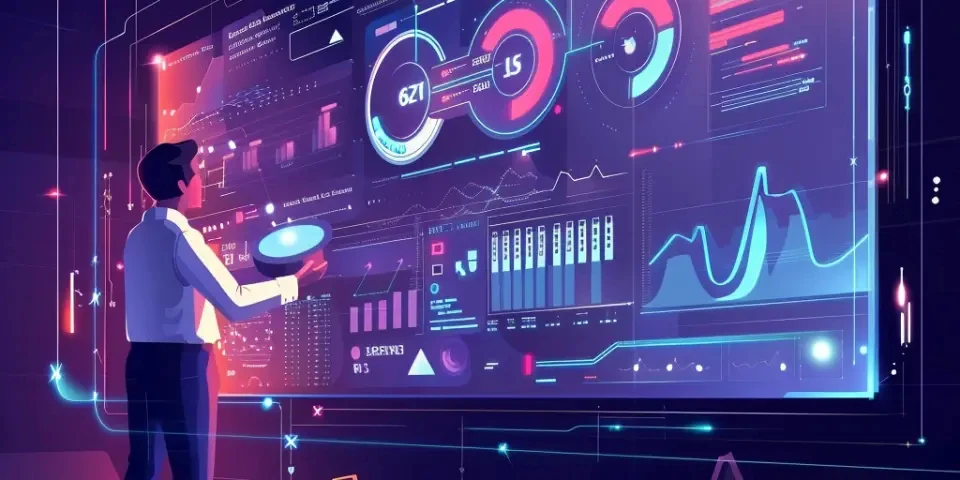Unlocking the Power of Metaphors How AI Enhances Communication
Metaphors have long been recognized as powerful tools for communication, enabling us to convey complex ideas and emotions in a concise and relatable manner. With advancements in artificial intelligence (AI), the potential of incorporating metaphors into various domains has increased significantly. In this article, we explore the ways in which AI enhances communication through the use of metaphors.
1. Understanding Metaphors
Before delving into the role of AI in enhancing metaphors, it is crucial to understand what metaphors are and how they work. Metaphors are figures of speech that use one concept to describe another concept indirectly. By drawing connections between different domains, metaphors facilitate the comprehension of abstract or unfamiliar ideas.

For example, when we say "time is money," we are using a metaphor to equate these two different concepts, emphasizing the importance of time in a similar way to money.
2. AI-powered Metaphor Generation
AI algorithms have the capability to analyze vast amounts of data and detect patterns that humans may not readily identify. This ability makes AI an excellent tool for generating metaphors.
By training AI models on diverse datasets, they can learn to recognize common patterns and associations between words. These models can then generate metaphors that are both accurate and creative, providing alternative ways to express complex ideas.
For instance, AI systems can generate metaphors to describe complex scientific terms or technical concepts, making them more accessible to a wider audience. This can greatly enhance science communication and foster a better understanding of intricate subjects.
3. Improving Human-Computer Interaction
Metaphors can also play a significant role in augmenting human-computer interaction. With AI-powered virtual assistants, incorporating metaphors into their interactions can make them more user-friendly and relatable.
For example, a virtual assistant can use metaphors to explain its capabilities. Instead of responding with technical jargon, it can describe its functions using everyday metaphors, making it easier for users to understand and utilize its features.
4. Facilitating Cross-Cultural Communication
Cross-cultural communication often faces challenges due to differences in language, customs, and perspectives. Metaphors can bridge these gaps by conveying complex cultural ideas in a way that is easily understandable for people from diverse backgrounds.
AI can facilitate cross-cultural communication by providing real-time metaphor translations. By understanding the context and cultural nuances, AI systems can accurately translate metaphors from one language to another, enabling smoother communication between individuals speaking different languages.
5. Enhancing Emotional Expression
Metaphors are powerful tools for expressing emotions and feelings in a way that words alone often cannot capture. By using AI, metaphors can be identified in text or spoken language, enabling a deeper understanding of emotional states.
For instance, sentiment analysis algorithms powered by AI can detect metaphoric language and identify the underlying emotions. This can be invaluable in areas such as market research, where understanding consumer emotions can help businesses tailor their marketing strategies effectively.
6. Metaphors in Marketing and Advertising
In the world of marketing and advertising, metaphors have long been employed to create memorable and impactful messages. AI can contribute to this field by generating novel and creative metaphors that resonate with the target audience.
By analyzing consumer data and trends, AI algorithms can identify metaphoric language commonly used by a specific demographic. This information can then be utilized to craft marketing campaigns that effectively communicate the desired message and connect with the consumers on a deeper level.
7. Metaphors in Education
AI-powered educational tools hold great promise in enhancing the learning experience. Metaphors can play a crucial role by simplifying complex concepts and improving retention.
By integrating AI technology into e-learning platforms, metaphors can be used to break down difficult subjects into relatable examples, facilitating better comprehension. This can revolutionize the way students learn and make education more engaging and enjoyable.
8. Ethical Considerations and Metaphors
While AI-powered metaphor generation offers numerous benefits, it is essential to consider the ethical implications. Metaphors, if used carelessly, can reinforce stereotypes, biases, or perpetuate misinformation.
Developers and researchers must ensure that AI models are trained on diverse and unbiased datasets to prevent the generation of metaphors that may inadvertently promote harmful or discriminatory ideas.
Conclusion
The synergy between AI and metaphors opens up exciting possibilities for enhancing communication across various domains. From improving human-computer interaction to bridging cultural gaps, AI-powered metaphors have the potential to reshape how we understand and convey complex ideas. However, it is crucial to approach this powerful combination with care and consideration, upholding ethical standards to ensure positive and inclusive communication.
Frequently Asked Questions
Q: Can AI understand cultural metaphors?
A: Yes, AI systems can be trained to understand cultural metaphors by analyzing large datasets from different cultures. This enables accurate translation and cross-cultural communication.
Q: How can AI-generated metaphors be used in storytelling?
A: AI-generated metaphors can enrich storytelling by providing creative and vivid descriptions. Writers can utilize AI models to generate metaphors that resonate with the desired theme or mood of a story.
Q: What are the potential limitations of AI-generated metaphors?
A: AI-generated metaphors may lack the emotional depth and contextual understanding that human-generated metaphors possess. Additionally, they may sometimes produce metaphors that sound unnatural or forced.
References
1. Smith, N. (2020). Artificial Intelligence in Science Communication: The Essence of Metaphor. IEEE Technology and Society Magazine.
2. Jones, S. (2019). How Technology is Transforming the Field of Advertising. Marketing Week.
Explore your companion in WeMate